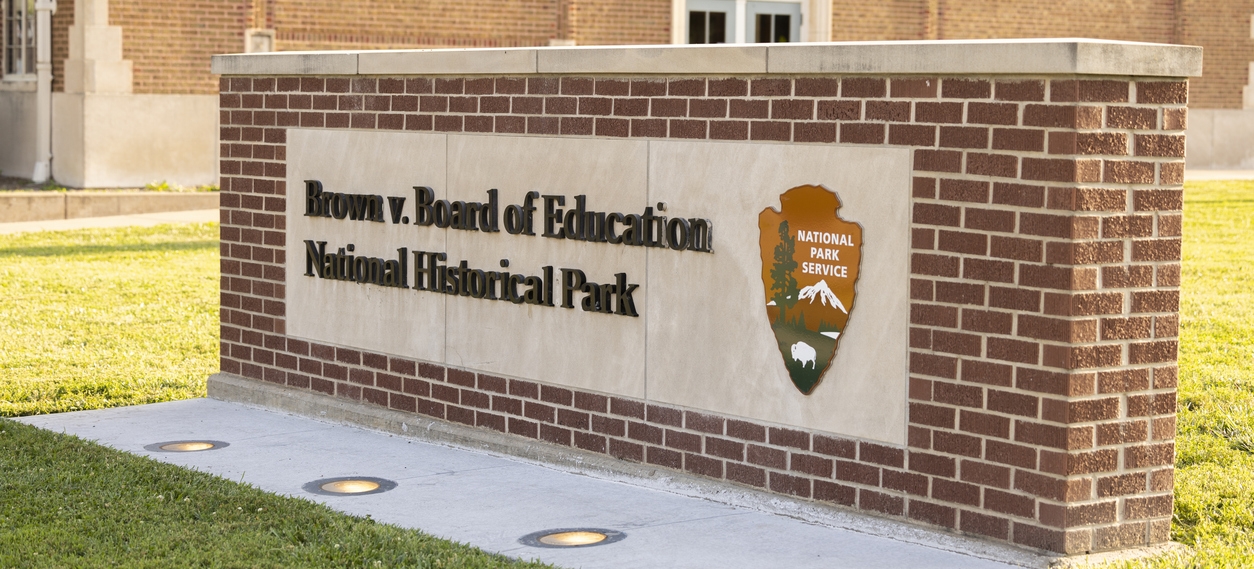| By J. Robert Parks |
Brown v. Board of Education of Topeka, Kansas, which was decided seventy years ago this week on May 17, 1954, might be one of the most famous Supreme Court decisions of the twentieth century, but it’s also one of the more misunderstood. Although it’s widely hailed today as the decision that ended segregation in U.S. education, the reality is more complex. Teachers and librarians who want to provide the full scope of the decision and its aftermath will find numerous resources in Gale In Context: U.S. History.
The end of Reconstruction in the South and then the rise of Jim Crow dictated segregation in all parts of life, but education was particularly affected. The notorious 1896 Supreme Court decision Plessy v. Ferguson, deemed by many legal scholars to be among the Court’s worst, decreed that “separate but equal” facilities were constitutional. But the schools and resources for Black children were rarely equal to those for white children.
By the mid-twentieth century, the National Association for the Advancement of Colored People (NAACP) had focused its attention on using the courts to overturn the worst parts of Jim Crow, particularly Plessy. In the early 1950s, the NAACP filed suit in several communities looking to overturn segregation in public schools. One of those locales was Topeka, Kansas, and a suit was filed in 1951 on behalf of Oliver Brown, a parent in the city. By the time the case reached the Supreme Court in 1953, it was combined with several other school desegregation cases.
Thurgood Marshall had become the NAACP’s special counsel in 1939, and over the next two decades, he argued dozens of cases, including 32 before the Supreme Court, winning 29 of them. In the years leading up to Brown, he argued multiple public education cases before the Court, but Brown was his most significant.
By historical accounts, most of the Supreme Court justices were against segregation but were also wary of any decision that would have a dramatic impact. One small but key event, however, occurred in September 1953 when Chief Justice Fred Vinson died and was replaced by Earl Warren, who was in favor of a more socially progressive judiciary. He was able to convince the other justices that Brown should be used to strike down legal segregation. In a landmark unanimous decision, Brown v. Board of Education overturned Plessy and ruled that “separate but equal” facilities were unconstitutional.
This is often where history accounts stop, but it’s probably where they should begin, for Brown did not end school segregation. Not only was there fierce resistance to integration, but also the justices’ reticence to affect culture too significantly led them to include an important phrase in their ruling: “all deliberate speed.” In other words, the Supreme Court did not overturn segregation immediately but instead wrote that school desegregation should be pursued as a gradual process. That, of course, could be construed in a variety of ways, and it left the door open for school districts to allow segregation to continue for years.
One of the more famous examples of integration occurred in 1957 when President Dwight Eisenhower sent federal troops to Little Rock, Arkansas, to enforce desegregation and allow the Little Rock Nine, nine Black students, to enter Little Rock Central High School. The courage of the students has been rightly celebrated, but again some history books leave out the fact that the city of Little Rock responded the following year by shutting down all public high schools for a full year. In many other places, schools remained largely segregated well into the 1960s and even 1970s. Furthermore, many private schools were established as a way for white parents to avoid sending their children to integrated schools.
This wasn’t simply an issue in the South. Northern schools could be just as segregated, given that racial discrimination in Northern cities had left many neighborhoods almost completely segregated. In the 1970s, the courts started to rule against school districts in both the North and South in an attempt to enforce meaningful integration. The solution the courts recommended was busing: White students would be bused to schools in majority-Black neighborhoods and vice versa. The response by many white parents in Northern cities was almost cataclysmic. Busing continued in many cities but was eventually abandoned.
The mixed effects of Brown and the fact that segregation in schools is still a national problem have led many people to rethink their position on the Brown decision. Some have argued that the Court should have focused on the “equal” part of “separate but equal,” believing that the justices should have foreseen school segregation as a likely issue for decades; therefore the emphasis should have been on making sure historically marginalized schools have equal facilities, funding, and resources. Others have argued that the civil rights “victory” of Brown created such a backlash that it actually set the movement back. As students learn about the progress that was made in the civil rights era, it’s important that they learn history is often more complicated than it first appears.
About the Author
J. Robert Parks is a former professor and frequent contributor to Gale In Context: U.S. History and Gale In Context: World History who enjoys thinking about how our understanding of history affects and reflects contemporary culture.




